-
EXECUTIVE SUMMARY
-
MARKET INTRODUCTION
-
Definition
-
Scope of the Study
- Research Objective
- Assumptions
- Limitations
-
RESEARCH METHODOLOGY
-
Overview
-
Data Mining
-
Secondary Research
-
Primary Research
- Primary Interviews
- Breakdown of Primary Respondents
-
and Information Gathering Process
-
Forecasting Model
-
Market Size Estimation
- Bottom-Up Approach
- Top-Down Approach
-
Data Triangulation
-
Validation
-
MARKET DYNAMICS
-
Overview
-
Drivers
-
Restraints
-
Opportunities
-
MARKET FACTOR ANALYSIS
-
Value Chain Analysis
-
Porter’s Five Forces Analysis
- Bargaining Power
- Threat of New Entrants
- Threat of Substitutes
- Intensity of Rivalry
-
of Suppliers
-
Bargaining Power of Buyers
-
COVID-19 Impact Analysis
- Market Impact Analysis
- Regional Impact
- Opportunity and
-
Threat Analysis
-
GLOBAL SODIUM POLYACRYLATE SAP MARKET, BY TYPE
-
Overview
-
Polyacrylic acid (PAA)
-
Polyacrylamide (PAM)
-
Sodium Polyacrylate
-
Potassium Polyacrylate
-
Polysaccharides
-
Others
-
GLOBAL SODIUM POLYACRYLATE SAP MARKET, BY CATEGORY
-
Overview
-
Synthetic
-
Biobased
-
GLOBAL SODIUM POLYACRYLATE
-
SAP MARKET, BY APPLICATION
-
Overview
-
Personal Care
-
Agriculture
-
Healthcare
-
Building and Construction
-
Others
-
GLOBAL SODIUM POLYACRYLATE SAP MARKET, BY REGION
-
Overview
-
North America
- US
- Canada
-
Europe
- Germany
- France
- UK
- Italy
- Spain
- Rest of Europe
-
Asia-Pacific
- China
- India
- Japan
- South Korea
- Australia
- Rest of Asia-Pacific
-
Rest of the World
- Middle East
- Africa
- Latin America
-
COMPETITIVE LANDSCAPE
-
Overview
-
Competitive Analysis
-
Market Share Analysis
-
Major Growth Strategy
-
in the Global Sodium Polyacrylate SAP Market,
-
Competitive Benchmarking
-
Leading Players in Terms
-
of Number of Developments in the Global Sodium Polyacrylate SAP Market,
-
Key developments
- Merger & Acquisitions
- Joint Ventures
-
and Growth Strategies
-
New Product Launch/Service Deployment
-
Major Players Financial Matrix
- Sales & Operating
-
Income, 2022
-
Major Players R&D Expenditure. 2022
-
COMPANY PROFILES
-
Sanyo Chemical Industries Ltd
- Company Overview
- Financial Overview
- Products Offered
- Key Developments
- SWOT Analysis
- Key Strategies
-
LG Chem Ltd
- Company Overview
- Financial Overview
- Products Offered
- Key Developments
- SWOT Analysis
- Key Strategies
-
BASF SE
- Company Overview
- Financial Overview
- Products Offered
- Key Developments
- SWOT Analysis
- Key Strategies
-
Sumitomo Seika
- Company Overview
- Financial Overview
- Products Offered
- Key Developments
- SWOT Analysis
- Key Strategies
-
Chemicals Co Ltd
-
Company Overview
-
Financial Overview
-
Products Offered
-
Key Developments
-
SWOT Analysis
-
Key Strategies
-
NIPPON SHOKUBAI CO LTD
-
Company Overview
-
Financial Overview
-
Products Offered
-
Key Developments
-
SWOT Analysis
-
Key Strategies
-
Evonik Industries AG
-
Company Overview
-
Financial Overview
-
Products Offered
-
Key Developments
-
SWOT Analysis
-
Key Strategies
-
Chase Corp
-
Company Overview
-
Financial Overview
-
Products Offered
-
Key Developments
-
SWOT Analysis
-
Key Strategies
-
Yixing Danson Science and Technology Co Ltd
-
SONGWON INDUSTRIAL CO. LTD
- Company Overview
- Financial Overview
- Products Offered
- Key Developments
- SWOT Analysis
- Key Strategies
-
Satellite Chemical
-
Co Ltd
-
Company Overview
-
Financial Overview
-
Products Offered
-
Key Developments
-
SWOT Analysis
-
Key Strategies
-
APPENDIX
-
References
-
Related Reports
-
-
LIST OF TABLES
-
GLOBAL SODIUM
-
POLYACRYLATE SAP MARKET, SYNOPSIS, 2018-2032
-
GLOBAL SODIUM POLYACRYLATE SAP MARKET, ESTIMATES
-
& FORECAST, 2018-2032 (USD BILLION)
-
GLOBAL SODIUM POLYACRYLATE SAP MARKET, BY TYPE,
-
GLOBAL SODIUM POLYACRYLATE SAP MARKET, BY CATEGORY, 2018-2032
-
(USD BILLION)
-
TABLE
-
GLOBAL SODIUM POLYACRYLATE SAP MARKET, BY APPLICATION, 2018-2032 (USD BILLION)
-
NORTH AMERICA:
-
SODIUM POLYACRYLATE SAP MARKET, BY TYPE, 2018-2032 (USD BILLION)
-
NORTH AMERICA: SODIUM
-
POLYACRYLATE SAP MARKET, BY CATEGORY, 2018-2032 (USD BILLION)
-
NORTH AMERICA: SODIUM
-
POLYACRYLATE SAP MARKET, BY APPLICATION, 2018-2032 (USD BILLION)
-
US: SODIUM POLYACRYLATE
-
SAP MARKET, BY TYPE, 2018-2032 (USD BILLION)
-
US: SODIUM POLYACRYLATE SAP MARKET, BY CATEGORY,
-
US: SODIUM POLYACRYLATE SAP MARKET, BY APPLICATION, 2018-2032
-
(USD BILLION)
-
TABLE
-
CANADA: SODIUM POLYACRYLATE SAP MARKET, BY TYPE, 2018-2032 (USD BILLION)
-
CANADA: SODIUM
-
POLYACRYLATE SAP MARKET, BY CATEGORY, 2018-2032 (USD BILLION)
-
CANADA: SODIUM POLYACRYLATE
-
SAP MARKET, BY APPLICATION, 2018-2032 (USD BILLION)
-
EUROPE: SODIUM POLYACRYLATE SAP MARKET,
-
BY TYPE, 2018-2032 (USD BILLION)
-
EUROPE: SODIUM POLYACRYLATE SAP MARKET, BY CATEGORY, 2018-2032
-
(USD BILLION)
-
TABLE
-
EUROPE: SODIUM POLYACRYLATE SAP MARKET, BY APPLICATION, 2018-2032 (USD BILLION)
-
GERMANY: SODIUM
-
POLYACRYLATE SAP MARKET, BY TYPE, 2018-2032 (USD BILLION)
-
GERMANY: SODIUM POLYACRYLATE SAP MARKET,
-
BY CATEGORY, 2018-2032 (USD BILLION)
-
GERMANY: SODIUM POLYACRYLATE SAP MARKET, BY APPLICATION,
-
FRANCE: SODIUM POLYACRYLATE SAP MARKET, BY TYPE, 2018-2032
-
(USD BILLION)
-
TABLE
-
FRANCE: SODIUM POLYACRYLATE SAP MARKET, BY CATEGORY, 2018-2032 (USD BILLION)
-
FRANCE: SODIUM
-
POLYACRYLATE SAP MARKET, BY APPLICATION, 2018-2032 (USD BILLION)
-
ITALY: SODIUM POLYACRYLATE
-
SAP MARKET, BY TYPE, 2018-2032 (USD BILLION)
-
ITALY: SODIUM POLYACRYLATE SAP MARKET, BY
-
CATEGORY, 2018-2032 (USD BILLION)
-
ITALY: SODIUM POLYACRYLATE SAP MARKET, BY APPLICATION, 2018-2032
-
(USD BILLION)
-
TABLE
-
SPAIN: SODIUM POLYACRYLATE SAP MARKET, BY TYPE, 2018-2032 (USD BILLION)
-
SPAIN: SODIUM
-
POLYACRYLATE SAP MARKET, BY CATEGORY, 2018-2032 (USD BILLION)
-
SPAIN: SODIUM POLYACRYLATE
-
SAP MARKET, BY APPLICATION, 2018-2032 (USD BILLION)
-
UK: SODIUM POLYACRYLATE SAP MARKET, BY TYPE,
-
UK: SODIUM POLYACRYLATE SAP MARKET, BY CATEGORY, 2018-2032
-
(USD BILLION)
-
TABLE
-
UK: SODIUM POLYACRYLATE SAP MARKET, BY APPLICATION, 2018-2032 (USD BILLION)
-
REST OF EUROPE:
-
SODIUM POLYACRYLATE SAP MARKET, BY TYPE, 2018-2032 (USD BILLION)
-
REST OF EUROPE: SODIUM
-
POLYACRYLATE SAP MARKET, BY CATEGORY, 2018-2032 (USD BILLION)
-
REST OF EUROPE: SODIUM
-
POLYACRYLATE SAP MARKET, BY APPLICATION, 2018-2032 (USD BILLION)
-
ASIA-PACIFIC: SODIUM
-
POLYACRYLATE SAP MARKET, BY TYPE, 2018-2032 (USD BILLION)
-
ASIA-PACIFIC: SODIUM POLYACRYLATE SAP MARKET,
-
BY CATEGORY, 2018-2032 (USD BILLION)
-
ASIA-PACIFIC: SODIUM POLYACRYLATE SAP MARKET, BY
-
APPLICATION, 2018-2032 (USD BILLION)
-
JAPAN: SODIUM POLYACRYLATE SAP MARKET, BY TYPE,
-
JAPAN: SODIUM POLYACRYLATE SAP MARKET, BY CATEGORY, 2018-2032
-
(USD BILLION)
-
TABLE
-
JAPAN: SODIUM POLYACRYLATE SAP MARKET, BY APPLICATION, 2018-2032 (USD BILLION)
-
CHINA: SODIUM
-
POLYACRYLATE SAP MARKET, BY TYPE, 2018-2032 (USD BILLION)
-
CHINA: SODIUM POLYACRYLATE SAP MARKET, BY
-
CATEGORY, 2018-2032 (USD BILLION)
-
CHINA: SODIUM POLYACRYLATE SAP MARKET, BY APPLICATION, 2018-2032
-
(USD BILLION)
-
TABLE
-
INDIA: SODIUM POLYACRYLATE SAP MARKET, BY TYPE, 2018-2032 (USD BILLION)
-
INDIA: SODIUM
-
POLYACRYLATE SAP MARKET, BY CATEGORY, 2018-2032 (USD BILLION)
-
INDIA: SODIUM POLYACRYLATE
-
SAP MARKET, BY APPLICATION, 2018-2032 (USD BILLION)
-
AUSTRALIA: SODIUM POLYACRYLATE SAP MARKET,
-
BY TYPE, 2018-2032 (USD BILLION)
-
AUSTRALIA: SODIUM POLYACRYLATE SAP MARKET, BY CATEGORY, 2018-2032
-
(USD BILLION)
-
TABLE
-
AUSTRALIA: SODIUM POLYACRYLATE SAP MARKET, BY APPLICATION, 2018-2032 (USD BILLION)
-
SOUTH KOREA:
-
SODIUM POLYACRYLATE SAP MARKET, BY TYPE, 2018-2032 (USD BILLION)
-
SOUTH KOREA: SODIUM
-
POLYACRYLATE SAP MARKET, BY CATEGORY, 2018-2032 (USD BILLION)
-
SOUTH KOREA: SODIUM
-
POLYACRYLATE SAP MARKET, BY APPLICATION, 2018-2032 (USD BILLION)
-
REST OF ASIA-PACIFIC:
-
SODIUM POLYACRYLATE SAP MARKET, BY TYPE, 2018-2032 (USD BILLION)
-
REST OF ASIA-PACIFIC:
-
SODIUM POLYACRYLATE SAP MARKET, BY CATEGORY, 2018-2032 (USD BILLION)
-
REST OF ASIA-PACIFIC:
-
SODIUM POLYACRYLATE SAP MARKET, BY APPLICATION, 2018-2032 (USD BILLION)
-
REST OF THE
-
WORLD: SODIUM POLYACRYLATE SAP MARKET, BY TYPE, 2018-2032 (USD BILLION)
-
REST OF THE
-
WORLD: SODIUM POLYACRYLATE SAP MARKET, BY CATEGORY, 2018-2032 (USD BILLION)
-
REST OF THE
-
WORLD: SODIUM POLYACRYLATE SAP MARKET, BY APPLICATION, 2018-2032 (USD BILLION)
-
MIDDLE EAST:
-
SODIUM POLYACRYLATE SAP MARKET, BY TYPE, 2018-2032 (USD BILLION)
-
MIDDLE EAST: SODIUM
-
POLYACRYLATE SAP MARKET, BY CATEGORY, 2018-2032 (USD BILLION)
-
MIDDLE EAST: SODIUM
-
POLYACRYLATE SAP MARKET, BY APPLICATION, 2018-2032 (USD BILLION)
-
AFRICA: SODIUM POLYACRYLATE
-
SAP MARKET, BY TYPE, 2018-2032 (USD BILLION)
-
AFRICA: SODIUM POLYACRYLATE SAP MARKET,
-
BY CATEGORY, 2018-2032 (USD BILLION)
-
AFRICA: SODIUM POLYACRYLATE SAP MARKET, BY APPLICATION,
-
LATIN AMERICA: SODIUM POLYACRYLATE SAP MARKET, BY TYPE, 2018-2032
-
(USD BILLION)
-
TABLE
-
LATIN AMERICA: SODIUM POLYACRYLATE SAP MARKET, BY CATEGORY, 2018-2032 (USD BILLION)
-
LATIN AMERICA:
-
SODIUM POLYACRYLATE SAP MARKET, BY APPLICATION, 2018-2032 (USD BILLION)
-
LIST OF FIGURES
-
RESEARCH PROCESS
-
MARKET STRUCTURE
-
FOR THE GLOBAL SODIUM POLYACRYLATE SAP MARKET
-
MARKET DYNAMICS FOR THE GLOBAL SODIUM POLYACRYLATE
-
SAP MARKET
-
FIGURE
-
GLOBAL SODIUM POLYACRYLATE SAP MARKET, SHARE (%), BY TYPE, 2022
-
GLOBAL SODIUM POLYACRYLATE
-
SAP MARKET, SHARE (%), BY CATEGORY, 2022
-
GLOBAL SODIUM POLYACRYLATE SAP MARKET, SHARE (%),
-
BY APPLICATION, 2022
-
FIGURE
-
GLOBAL SODIUM POLYACRYLATE SAP MARKET, SHARE (%), BY REGION, 2022
-
NORTH AMERICA: SODIUM
-
POLYACRYLATE SAP MARKET, SHARE (%), BY REGION, 2022
-
EUROPE: SODIUM POLYACRYLATE SAP MARKET,
-
SHARE (%), BY REGION, 2022
-
ASIA-PACIFIC: SODIUM POLYACRYLATE SAP MARKET, SHARE (%),
-
BY REGION, 2022
-
FIGURE
-
REST OF THE WORLD: SODIUM POLYACRYLATE SAP MARKET, SHARE (%), BY REGION, 2022
-
FIGURE 12
-
GLOBAL SODIUM POLYACRYLATE SAP MARKET: COMPANY SHARE ANALYSIS, 2022 (%)
-
SANYO CHEMICAL
-
INDUSTRIES LTD: FINANCIAL OVERVIEW SNAPSHOT
-
SANYO CHEMICAL INDUSTRIES LTD: SWOT ANALYSIS
-
FIGURE 15
-
LG CHEM LTD: FINANCIAL OVERVIEW SNAPSHOT
-
LG CHEM LTD: SWOT ANALYSIS
-
BASF SE: FINANCIAL OVERVIEW SNAPSHOT
-
BASF SE: SWOT
-
ANALYSIS
-
FIGURE
-
SUMITOMO SEIKA CHEMICALS CO LTD: FINANCIAL OVERVIEW SNAPSHOT
-
SUMITOMO SEIKA CHEMICALS
-
CO LTD: SWOT ANALYSIS
-
FIGURE
-
NIPPON SHOKUBAI CO LTD: FINANCIAL OVERVIEW SNAPSHOT
-
NIPPON SHOKUBAI CO LTD: SWOT ANALYSIS
-
EVONIK INDUSTRIES
-
AG.: FINANCIAL OVERVIEW SNAPSHOT
-
EVONIK INDUSTRIES AG.: SWOT ANALYSIS
-
CHASE CORP: FINANCIAL OVERVIEW SNAPSHOT
-
FIGURE 26
-
CHASE CORP: SWOT ANALYSIS
-
YIXING DANSON SCIENCE AND TECHNOLOGY CO LTD: FINANCIAL OVERVIEW
-
SNAPSHOT
-
FIGURE
-
YIXING DANSON SCIENCE AND TECHNOLOGY CO LTD: SWOT ANALYSIS
-
SONGWON INDUSTRIAL
-
CO. LTD: FINANCIAL OVERVIEW SNAPSHOT
-
SONGWON INDUSTRIAL CO. LTD: SWOT ANALYSIS
-
SATELLITE CHEMICAL
-
CO LTD: FINANCIAL OVERVIEW SNAPSHOT
-
SATELLITE CHEMICAL CO LTD: SWOT ANALYSIS

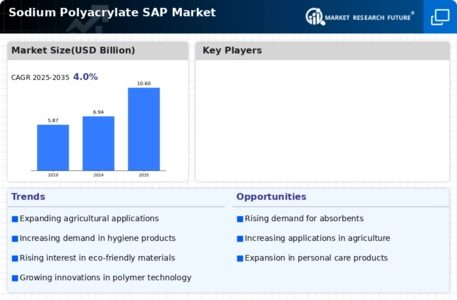

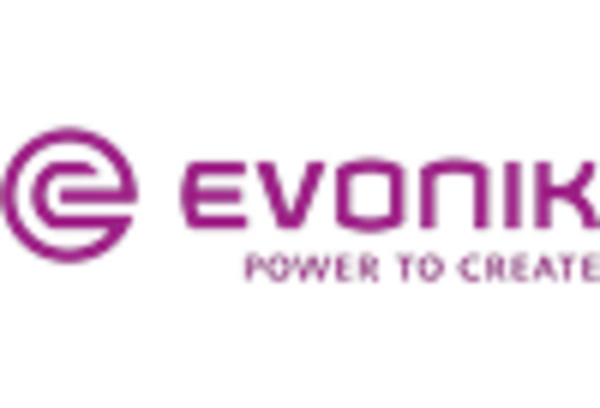
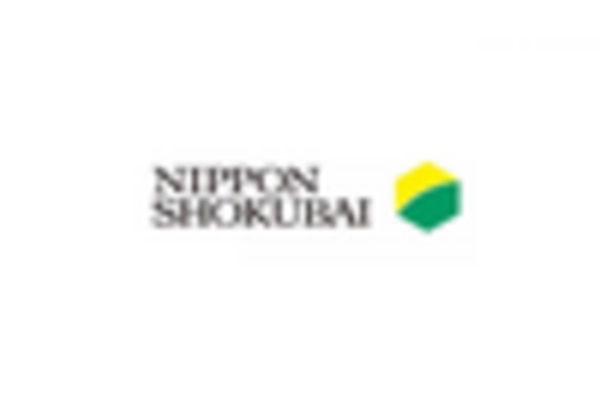
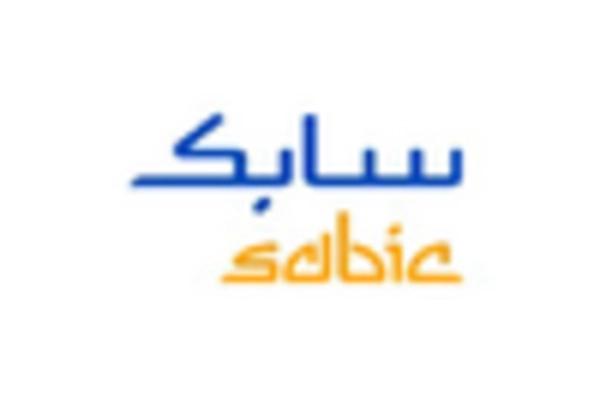
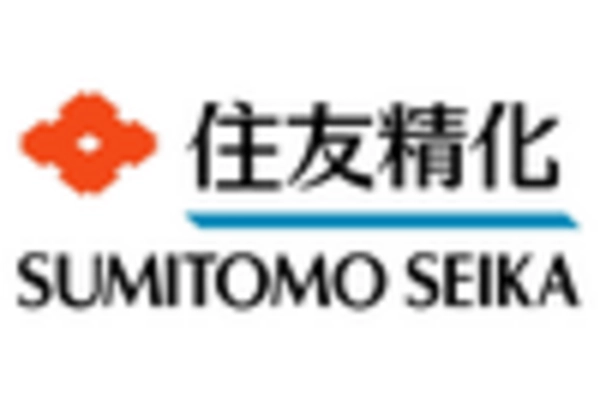
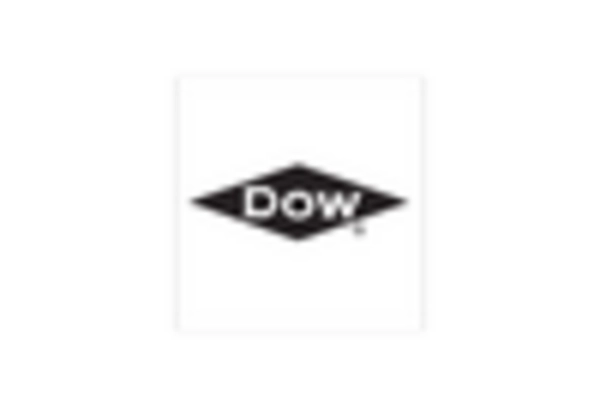









Leave a Comment